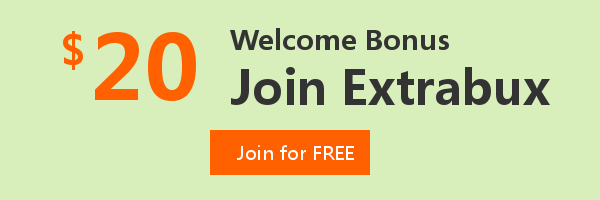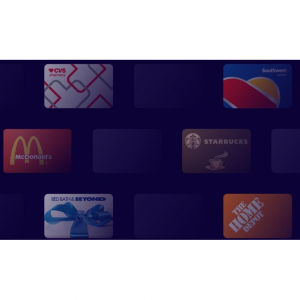
AWS Outposts vs. Google Cloud vs. Microsoft Azure: Which Makes the Best Hybrid Cloud Solution?
What is Hybrid Cloud?
Hybrid cloud is a collaborative and integrated combination of private cloud and public cloud. By allowing organizations to seamlessly move and manage their workloads in a "cloud anywhere" manner, it can optimize costs while meeting compliance and security requirements, thereby providing the best "Great value for money".
By definition, hybrid cloud is an IT infrastructure deployment model that allows applications, workloads, and data to be shared across different clouds and on-premises environments. The goal is to develop an effective combination of orchestrated cloud resources and leverage the flexibility of this cloud strategy by deploying the right workloads in the right environment.
In short, more and more organizations are choosing a hybrid cloud approach to more effectively achieve their computing goals and save IT costs.
Hybrid deployments are common, and the two most typical scenarios are:
A business moves partly to the cloud and decides that it is too resource-intensive to migrate all the way.
A company decides to keep some processes and sensitive data in a controlled environment while capitalizing on the low overhead of a public cloud.
Unlike a multi-cloud strategy, a hybrid setup relies on deep orchestration between different cloud platforms. The goal is to create a unified environment in which separate systems communicate and handle the same IT workloads.
Hybrid Cloud vs. Multi-Cloud: What is the difference?
There are three ways of cloud, they are private cloud, public cloud and hybrid or multi-cloud. We hear more and more a new buzzword - "Multi-Cloud".
Multi-Cloud
In a multi-cloud strategy, a company uses multiple cloud services of the same type from different providers.
Most multi-cloud setups include a mix of public cloud providers such as Amazon Web Services (AWS), Google Cloud Platform (GCP), Bare Metal Cloud (BMC), Microsoft (Azure). Every cloud in a multi-cloud setup handles specific workloads, so there are typically no workload integrations between infrastructures.
Multi-cloud includes multiple public clouds (but can also have private clouds, community clouds, and on-premise data centers).
Hybrid cloud
Hybrid cloud differs from multi-cloud computing in one significant way: the inclusion of private cloud infrastructure such as an enterprise’s own data center along with one or more public cloud services, usually working in conjunction to achieve business goals.
Thus the two major differences are as follows:
Hybrid clouds always include a private cloud and are typically managed as one entity
Multi-clouds always include more than one public cloud service, which often perform different functions. Multi-clouds do not have to include a private cloud component, but they can, in which case they can be both multi-cloud and hybrid cloud.
The most popular hybrid strategy is running app code on an in-house setup (either a data center or a private cloud) and cloud bursting into the public infrastructure in times of high traffic.
Benefits of Hybrid Cloud Solutions
Scalability:
Notwithstanding the fact that private cloud still offers some degree of scalability base on configurations whether internal or external hosting there is lesser limitation to the public cloud in terms of scalability. The reason for this is because of presence of larger infrastructure where resource is pulled. Public cloud can increase their chance of enjoying scalability associated with public cloud and their need for private cloud by transferring most less sensitive functions to the public cloud.
Security:
Keep your business-critical workloads and sensitive customer data well protected in a highly secure private environment. Hybrid environments let you deploy your less sensitive and more dynamic workloads in the public cloud to leverage its power and flexibility. Use encryption to further mitigate the risks and ensure data safety across multiple environments.
More Economical:
Optimize your IT spending by deploying the right workload on the right cloud. Hybrid cloud lets you keep predictable workloads on your on-premises or private cloud infrastructure and migrate the more volatile ones to Public Cloud. The pay-as-you-go model provides cost predictability, helping businesses plan resource utilization more efficiently.
Flexibility:
Organization will stand chance of exploring more operational avenues through the scalability, secure resource and cost-effectiveness coming from public and private cloud.
Who uses Hybrid Cloud?
Unpredictable Workloads
To meet sudden capacity demands, organizations often „spill over“ their workloads from one cloud environment to another. This is called cloud bursting. In a hybrid cloud scenario, companies run their steady workloads in the private cloud and use on-demand public cloud resources to handle demand spikes.
Edge and IoT
Edge computing is a type of cloud computing in which data processing happens on the location nearest to the data source. Both edge computing and hybrid cloud, let you keep the data on private or public clouds that are geographically close to the IoT device or application. This helps deliver services with lower latency and greater stability.
Cloud-Native Development
Modern cloud-native applications are hybrid as some of their workloads run in the public cloud, while others are deployed in the private cloud, on-premises, or in hosted environments. Companies use the cloud for development, quality assurance, DevOps, and testing while keeping production mostly on-premises.
Disaster Recovery
Companies can ensure business continuity by deploying a second DR site or leveraging cloud-based disaster recovery solution (DRaaS). The latter gives organizations more flexibility and is more cost-efficient than building and maintaining another physical location. This is why DRaaS is often a path to cloud hybridization.
What are the best hybrid cloud providers?
The market for hybrid cloud providers is growing as more and more enterprise realize that some form of hybrid cloud likely their best strategy.
In fact, the three most prominent cloud vendors are almost unanimous across the board, no matter who you ask. Amazon Web Services, Microsoft’s Azure, and the Google Cloud Platform have quickly become household names in the fifteen-plus years since AWS’ inception in 2006.
AWS, for instance, so heavily promotes the concept of the public cloud as the answer to any enterprise problem that it’s not known as a hybrid provider. Though strictly speaking, a company could cobble together a hybrid cloud using its offerings.
Microsoft is particularly strong in hybrid cloud, and many cloud experts predict that this strength will be a big competitive edge for its Azure offering in the years ahead.
While there are a number of smaller cloud service providers that may prove a good fit for your organization, the current cloud service world is overwhelmingly dominated by a few large vendors primed for public cloud adoption.
The best hybrid cloud providers in 2025 are:
Microsoft Azure
Amazon Web Services (AWS)
Google Cloud Platform (GCP)
Top 3 Best Hybrid Cloud Solutions
AWS, Microsoft Azure and Google Cloud are very competitive in the hybrid cloud market, but you need to find your ideal hybrid cloud solution:
Microsoft Azure | Best Overall Hybrid Cloud Solution | |
Amazon Web Services | Best for High Profile Cloud Solutions | |
Google Cloud Platform | Best for Outstanding Functionalities |
The base infrastructure is identical across the AWS, Azure and Google cloud implementations, namely the following:
vSphere VMs
vSAN storage
NSX-T virtual networking and network services
vCenter and vRealize management interface
on-demand provisioning and capacity scaling
What is AWS Outposts?
Amazon Web Services (AWS) is recognized as one of the top three cloud providers globally, catering to small businesses, enterprises, and government agencies.
AWS Outposts is Amazon’s way of making their own AWS-based services available for on-premises use and was seen a few years back as a departure from their well-known method: public cloud only. Apart from running AWS on-prem, these services allow customers to extend AWS virtual private clouds into their on-prem environments.
While AWS is better known for its public cloud services, it also has a popular hybrid offering called Outposts.
The key features of AWS Outposts include:
A fully managed service comprising the same infrastructure, services, application programming interfaces (APIs), and tools as AWS
Highly scalable from 1 rack to 96 racks to match your compute and storage capacity needs
Consistent hybrid experience across AWS public cloud and your on-premise infrastructure
Data residency and data processing with a localization focus
Ideal for low-latency compute use cases
What is Microsoft Azure?
Microsoft Azure is one of the top hybrid cloud computing companies in 2025 with multiple hybrid cloud Azure products and services.
This tech company offers hybrid cloud solutions to provide the consistency and flexibility to innovate at any place with a holistic as well as secure approach in cloud computing.
The Azure infrastructure powers Microsoft’s full ecosystem of cloud-based software and tools and is commonly leveraged as a public cloud platform. Microsoft also offers StorSimple, which applies Microsoft’s cloud capabilities to hybrid cloud use cases.
It took a bit of time, but Microsoft Azure has grown. It has now evolved into a robust package with several distinct products and services within the suite.
The key features of Microsoft Azure include:
Storage consolidation using physical arrays and virtual arrays depending on your enterprise size and needs
Data management automation, including automatic archival of inactive primary data from on-premises to the cloud
Software-defined policies for disaster recovery and compliance
StorSimple 8000 Series hybrid arrays and on-premises StorSimple Virtual Array
Compliance with all major industry and government-mandated security regulations
What is Google Anthos?
While Google is better known for the Google Cloud Platform (a public cloud), it also has a powerful managed application platform for hybrid use cases called Anthos. Google announced the general availability of Anthos in 2019, which makes it a relatively new entrant in the hybrid cloud software solution segment.
Anthos supports software development lifecycles in a hybrid environment, with a particular focus on containerization. Further, Anthos includes multiple ready-to-use tools to make developer’s lives easier – e.g., Migrate for Anthos for workload modernization and containerization, Traffic Director for load balancing across clusters and regions, and Google Cloud’s operations suite for cloud health monitoring.
The key features of Google Anthos include:
Supports Kubernetes cluster execution in cloud and on-premise environments
Can run in virtualized infrastructure as well as bare-metal servers
Anthos Config Management to automate security policy enforcement at scale
Anthos Service Mesh to monitor and troubleshoot application performance in the hybrid cloud
Cloud Run for Anthos, which is a serverless development platform to deploy your existing workloads on the cloud
AWS Outposts vs. Microsoft Azure vs. Google Anthos
Comparison of advantages and disadvantages
Microsoft Azure advantages
Seamless integrations with other Microsoft products and services
Improved support for Linux and open-source application stacks
Ideal for hybrid cloud
Recommended for all use cases that run well in a virtualized environment
Microsoft Azuredisadvantages
Poor support for large-scale implementations
Advanced technical expertise is required to implement Azure in a reliable, secure way
Historical issues with infrastructure reliability
AWS advantages
Most mature, enterprise-ready provider
Broad collection of services and partner ecosystem
Recommended for all use cases that run well in a virtualized environment
AWS disadvantages
Requires advanced technical expertise to implement
Lacks strong hybrid cloud support
Extensive catalog of offerings can be overwhelming to navigate
Google Cloud advantages
Great reputation in the open-source community
Deep investments in analytics and machine learning
Recommended for big data and analytics applications, ML projects and cloud-native applications
Google Cloud disadvantages
Rigid in contract negotiations
Small partner ecosystem
Limited range of services for larger companies
Comparison of Hardware Options
Azure Stack
Azure Stack, the Azure hybrid cloud solution, is also a relatively restrictive platform. It requires certified hardware, although Stack-compatible servers are available from a variety of vendors. It also works only with private hardware, not other public clouds.
This means that to run Azure Stack, you’ll need to purchase specialized hardware.
Azure Arc, on the other hand, is more flexible. It extends the Azure control plane to basically any type of infrastructure, which means colocation customers can manage their data centers using the same tools, and configure them with the same workloads, as they could in the Azure cloud itself.
For now, Azure Arc is still being rolled out. When it’s complete, however, it’s likely to place Microsoft in a dominant position within the hybrid cloud market.
Google Anthos
Google Anthos has partnerships with Cisco, Dell EMC, HPE, Intel, NetApp, and many other hardware makers (see all partnerships), so it can work with almost any on-premises hardware you already own.
Like Azure Arc, Anthos supports multiple public clouds and basically any private data center. It also works with any modern hardware: Users can bring the servers they already own, or purchase new ones.
The only major caveat with Anthos is that it’s Kubernetes-oriented. For colocation customers who haven’t yet jumped on the K8s bandwagon, Anthos may be less attractive than a platform like Azure Arc. On the other hand, for those who want to update their legacy workloads and go all-in on cloud-native, Anthos offers an easy path for getting there.
AWS Outposts
AWS Outposts, the AWS hybrid cloud solution, is probably the most restrictive of the hybrid platforms. It requires servers purchased from Amazon itself, and it doesn’t work with third-party clouds, just private hardware.
AWS Outposts is a managed service that only works on fully managed hardware devices designed and supported by AWS.
Comparison of Deployment Effort
With Google Anthos, your organization is responsible for setting up on-premises hardware and deploying Anthos.
With Azure Stack Hub and HCI, you are similarly responsible for preparing hardware and deploying the Azure Stack software on it. However, Azure Stack Edge comes as a managed appliance you can deploy in your data center with minimal setup.
AWS Outposts is a fully managed appliance that Amazon ships to your data center, installs, and operates. This requires almost no deployment effort from your organization.
Comparison of Multi-Cloud Support
Google Anthos is a Kubernetes distribution, and so by design it is cloud agnostic and vendor agnostic. It can run on any public cloud and is easy to migrate between clouds, because all cloud providers natively support Kubernetes. As mentioned above, Anthos added explicit integration with AWS, and will add integration with the Azure cloud in the future.
Azure Stack only works with the Microsoft Azure cloud and cannot be integrated with other public clouds.
AWS Outposts, similarly, does not support other clouds apart from Amazon. It also doesn’t provide an easy way to migrate workloads to any other cloud provider.
Comparison of Apps
AWS | Azure | Google Cloud | |
Collaboration tool suite | N/A | Microsoft 365 | Google Workspace |
Document sharing and storage | Amazon WorkDocs | Microsoft Word | Google Docs |
Email and calendar | Amazon WorkMail | Outlook | Gmail |
Low-code/no-code | Amazon Honeycode (preview) | Microsoft PowerApps, Project Bonsai (preview) | AppSheet |
Video calls and chat | Amazon Chime | Microsoft Teams | Google Meet |
Voice assistant | Alexa for Business | Cortana | Google Assistant |
Comparison of Prcing
Although the prices of Azure and AWS are roughly similar, Microsoft's Azure Hybrid Benefit makes Windows Server and SQL Server workloads more affordable to run on Azure.
Microsoft Azure Pricing
The subscription cost will vary depending on the region and shipping factors, but the Azure Stack Edge Pro starts at $350 for the Central US region.

Amazon Web Services Pricing
Hourly prices range from $0.011/hour to $0.27/hour and are charged in addition to EC2 costs.

Google Cloud Platform Pricing
To get a quote for your organization, you will need to contact GCP's team.
Which Hybrid Cloud Should I Choose?
Microsoft Azure achieves the highest customer satisfaction-ranking first in terms of product features, profitability, and pricing maturity. Choose Microsoft Azure for its developer productivity magnification, communication between the public cloud and on-premise Azure Stack, and a holistic security overview.
Windows, Linux support, AI, data analysis apps in a tool that will let you run workloads for free are hard to find anywhere except in Google Cloud Platform.
For consistent development and IT operations experience across all environments while serving computing, storage, integration, and monitoring services, pick Amazon Web Services.

Extrabux is an international cashback shopping site, offering up to 30% cashback from 10,000+ Stores!
Squarespace, SkinStore, MATCHESFASHION, The Wall Street Journal, NordVPN, Visible, Armani Exchange, Sam's Club, PUMA, AliExpress, Card Cash, NET-A-PORTER, Udacity, Udemy, Selfridges, LOOKFANTASTIC, Vimeo, Coach Outlet, lululemon, PrettyLittleThing, Booking.com, Ripley's Aquarium, iHerb, Groupon, etc.
Join to get $20 welcome bonus now! (How does Welcome Bonus work?)
Recommendation
-

Is Turkish Airlines Good for International Flights?
-

10 Best & Stylish Winter Coats for Women on NET-A-PORTER in 2025
-

Top & Best 12 Sneaker Apps/Websites for Raffles, Releases & Restocks in 2025
-

7 Best Gift Card Exchange Sites - Buy, Sell and Trade Discount Gift Card Safely and Instanly!
-

Top 9 Professional Skincare Brands for Licensed Estheticians 2025










